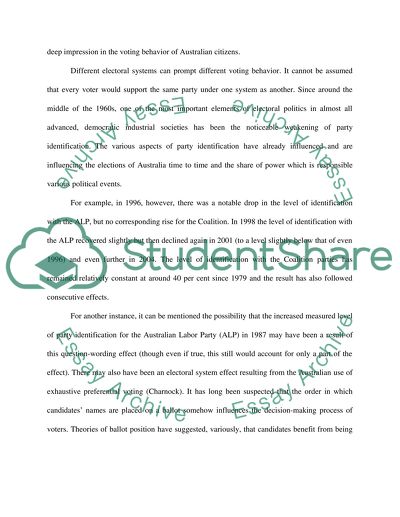Cite this document
(Australia Voting and Elections Assignment Example | Topics and Well Written Essays - 1750 words, n.d.)
Australia Voting and Elections Assignment Example | Topics and Well Written Essays - 1750 words. https://studentshare.org/law/1505690-australia-voting-and-elections
Australia Voting and Elections Assignment Example | Topics and Well Written Essays - 1750 words. https://studentshare.org/law/1505690-australia-voting-and-elections
(Australia Voting and Elections Assignment Example | Topics and Well Written Essays - 1750 Words)
Australia Voting and Elections Assignment Example | Topics and Well Written Essays - 1750 Words. https://studentshare.org/law/1505690-australia-voting-and-elections.
Australia Voting and Elections Assignment Example | Topics and Well Written Essays - 1750 Words. https://studentshare.org/law/1505690-australia-voting-and-elections.
“Australia Voting and Elections Assignment Example | Topics and Well Written Essays - 1750 Words”. https://studentshare.org/law/1505690-australia-voting-and-elections.


